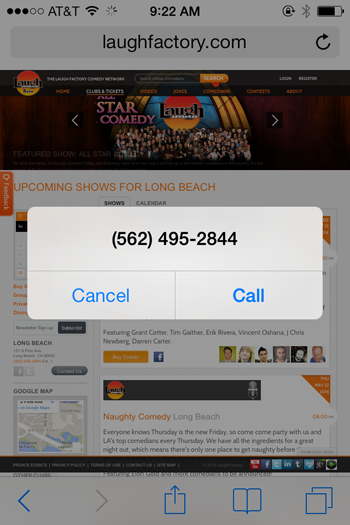Top 5 Website Design Tips for Local SEO Success

By Thomas Stern, ZOG Digital
New research from Google is backing up what digital marketers have been telling clients for years, local searchers convert into customers at an astonishing rate. According to Google, 34 percent of local searchers who use desktop or tablet devices made their way to a store and more than 50 percent of local searchers on smartphones did the same thing. Once they get to a store, local searchers are more likely to make a purchase. Google's research shows that 18 percent of local searches lead to a purchase within a day, compared to just 7 percent of non-local searches.
The power of local search to drive sales is the reason why local search engine optimization (SEO) is so important. The higher businesses rank in local searches, the more likely those local searchers will not only find them, but also visit the store and make a purchase. Local SEO success is built on the foundation of having a structurally sound website that is designed to guide search engines toward relevant information, helping businesses rank higher.
1. Build Dedicated Landing Pages
Dedicated landing pages are the bedrock of multi-location local SEO. Dedicated local landing pages allow search engines to break out each location separately, which focuses the content of each page and increases the ranking for local searches. Businesses should build a dedicated page for each location and it should include all of the pertinent information about the location including its address, hours of operation and phone number. For manufacturers that sell products through retail partners, dedicated landing pages should be built for each retail location that carries the product, allowing search engines to connect the product and the retailer while also giving consumers an easy to find where the product is being sold.
(Editor's Note: Nordstrom, for example, takes searchers to the local landing page shown below when they query "Norstrom San Diego".)
2. Utilize Structured Data
Search engines look for HTML keys to determine the focus of a particular Web page and the content inside it. Businesses focusing on local SEO should use structured data to assist search engines in this task, helping enhance search results. Structured data is added directly to the Web page's HTML markup and is used by search engines when generating search results. Businesses should include basic information such as name, address and phone numbers, using the recommended structured data markup by the search engines (generally schema.org). Companies that have events, multiple services at each location, or different series at different locations, should also include that information in the structured data packets as well.
3. Create Localized Content
To maximize the effect of local SEO, businesses must remember the importance of creating content that speaks to the local consumer. This includes using linguistic analysis to generate keywords that directly tie to how consumers in specific areas search. Our internal research shows that small differences in keyword targeting, such as "restaurants in Knoxville" versus "Knoxville restaurants," can have an impact on local rankings and Web traffic, and can lead toward more conversions from local searches. Also, businesses should conduct research to determine products, features and information that consumers in different geographic locations desire. The interests of local searchers can vary from state to state or neighborhood to neighborhood, therefore, so should the content of the dedicated local landing pages.
4. Optimize Internal Linking
Search engines use a website's internal links to navigate through its pages. If the search engine spiders cannot find a localized page for any reason, that page won't show up in search results. Therefore, the internal link structure should be organized in a way to make it as easy as possible for search engines to find every local page. This can be done by developing a HTML sitemap and submitting a XML sitemap to the search engines. Because of their ability to clear up any confusion that search engines may have when indexing, sitemaps are a must for every site. Errors can also be found by using Google Webmaster tools and any errors that are found, especially bad links or routing, should be immediately corrected.
5. Think Mobile
Local and mobile searches are inherently tied together, meaning businesses that want to optimize for local should also look at creating mobile-friendly digital assets. One way to do this is to use responsive design. Responsive design is preferred by Google because of its ability to automatically adjust to any size screen, cutting down on the need for mobile redirects.
Within the dedicated landing page, businesses should also create options that are aimed at mobile users. One tool businesses can create is a click-to-call button, which can cut down on the steps needed for a searcher to get a hold of a local business. One of the most common pieces of information mobile users look for is directions, so another option is to integrate mapping software, such as Google Maps, to help direct mobile searchers toward the nearest location. When thinking mobile, businesses should focus on making it as easy as possible for potential consumers to get from the website to where a purchase can be made, be that online or at a physical location.
(Editor's Note: Here's an example of a click-to-call feature that the Laugh Factory in Long Beach, Calif. uses.)

Massive Audience, Opportunities
Google's research shows that today's consumers more constantly connected and that they're using that connection to gain access to local information. In fact, four out of five people use search engines to research businesses around them. Companies that forgo local SEO strategies are missing out on this massive audience that is actively looking to make purchases and get a leg up on the competition.
Thomas Stern is senior vice president for ZOG Digital, a leading independent digital marketing company located in Scottsdale, Arizona that specializes in local SEO. You can reach him at thomas@zogdigital.com.

Subscribe to Our Newsletter!
Latest in Web Design









